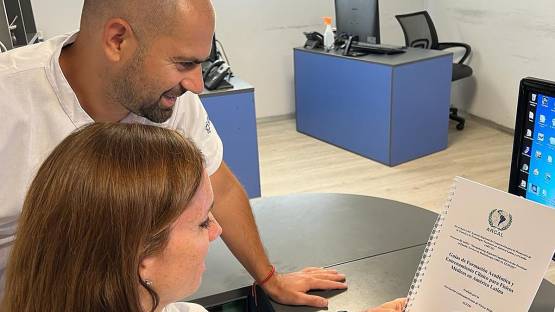New guidelines for academic and clinical training programmes for medical physics in Latin America are aimed at helping both the professionals and the patients.
Clinically qualified medical physicists (CQMPs) are highly specialized experts carrying out tasks that include quality assurance of radiation medicine equipment, treatment planning and evaluation of the dose to be delivered to cancer patients. Recognized as health professionals under IAEA Safety Standards (Radiation Protection and Safety of Radiation Sources: International Basic Safety Standards), their role in a radiation medicine team is crucial in ensuring safety, quality and effectiveness of diagnostic imaging and treatment procedures.
The IAEA has been supporting national authorities in implementing clinical training programmes according to international best practices, encouraging sustainable, regional approaches such as those launched earlier for Asia and the Pacific, and Africa. The new regional guidelines for Latin America, released in Spanish language in early November 2021, were prepared by experts under an IAEA technical cooperation project. The guidelines will improve sustainability of educational programmes for medical physicists in the region.
“The guidelines were designed to adapt to a variety of contexts and local differences in Latin America,” said Giorgia Loreti, IAEA Training Officer in Medical Physics and Technical Officer of the project. “The focus is on harmonization. For example, clinical training programmes could be provided through a collaboration of hospitals in one or more countries, to offer the full set of competencies.”
The guidelines contain recommendations for postgraduate academic education, followed by structured clinical training in three specialties of medical physics: radiation oncology, diagnostic radiology and nuclear medicine.
A number of competencies are needed for a medical physicist to work independently at the highest professional standards. The Latin American guidelines suggest nine competencies each for the radiation oncology and nuclear medicine medical physics specialization, and eight for the specialization in diagnostic radiology medical physics. The guidelines also offer specific templates to facilitate programme development.
‘’The Latin American Association of Medical Physicists (ALFIM) will support dissemination and implementation in the region,” said Sandra Guzman, medical physicist at the Radiotherapy Centre of Lima, in Peru. “ALFIM was happy to endorse the guidelines, which will help promote and harmonize education and training of medical physicists in our region.”






